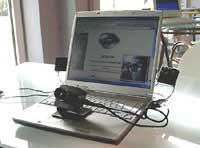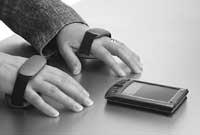Look, without hands!
2002/10/01 Galarraga Aiestaran, Ana - Elhuyar Zientzia Iturria: Elhuyar aldizkaria
There are already special tools for people with disabilities or who need their hands for other tasks, which make keyboard. Some of them are based on the movement of the eyes; through a camera, they receive the movement of the eyes and the computer program shows on the screen the visually chosen letter of the vocabulary in front. But writing like this is very slow and tired, and in no case you can write with the speed you take with the keyboard.
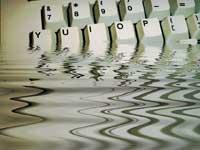
Now, researchers at the British University of Cambridge have invented how to accelerate the system. They also rely on eye movement to choose the letters they want to write, but it is new that invents what the next letter may be. The software is ready to get ahead of what you want to write. Thus, anyone trained in this way of writing can get to write as fast and comfortable as with the normal keyboard.
Probability calculation
The system is called Dasher and has the ability to predict the successor of a letter. To do this, calculate the probability that each letter will go behind the previous one. The selected letter initially appears on the left side of the screen and the full alphabet on the right. However, letters more likely to be later appear more clearly than the others, making them easier to select. In fact, more proving letters take up more space than the rest and are very easy to see. As the look turns to the letter chosen for the second place, this letter takes up even more space and hides others.
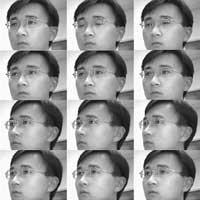
It is a very intuitive system, since when choosing the next letter you begin to calculate which may be the following and the whole word, including the full phrase. They appear quickly highlighted, occupying more space than the rest on the right side of the screen and ready to move to the left. Thanks to this, instead of writing lyrics, sentences are formed almost without realizing it. For example, if the first letter chosen by the user is ‘k’, and then he has looked at ‘a’ and then ‘i’ among the most prominent vowels, the words ‘kaia’ and ‘kaixo’ will be ready, for example, and will occupy more screen space than other combinations of letters.
In addition, Dasher has the ability to learn user preferences and preferences. It takes into account the words he writes most frequently and highlights them before everyone else.
Available languages
The software allows you to select from several languages and takes into account the writing rules of them. For example, if you choose Spanish, after the letter ‘q’ immediately appears ‘u’. It must be said that for the moment they have not taken into account Basque, and surely at some point a program adapted to our language will not be published. However, English, German, Finnish, Swedish, Danish and Norwegian dictionaries have been developed and Chinese and Japanese are being prepared.
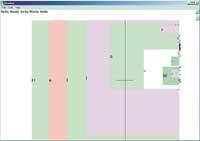
Both Chinese and Japanese have hundreds of characters, so there are not many keyboards that allow writing in those languages. Dasher, however, has no limits on the number of characters and, as evidenced by the most common sequence of characters, may be perfectly appropriate for writing in those languages. Now the Japanese city is testing a prototype specially prepared for writing.
According to the authors, the maximum number of words per minute that can be written with the existing software is 15, and care must be taken not to select unwanted letters and avoid errors. With Dasher, the user can easily reach 25 words per minute.
It is clear that this software is very suitable for people with disabilities to write with their hands, but also for laptops and small laptops that do not have a keyboard.
If you want to try it you can do it in
http://www.inference.phy.cam.ac.uk/dasher/Download.html

Gai honi buruzko eduki gehiago
Elhuyarrek garatutako teknologia




